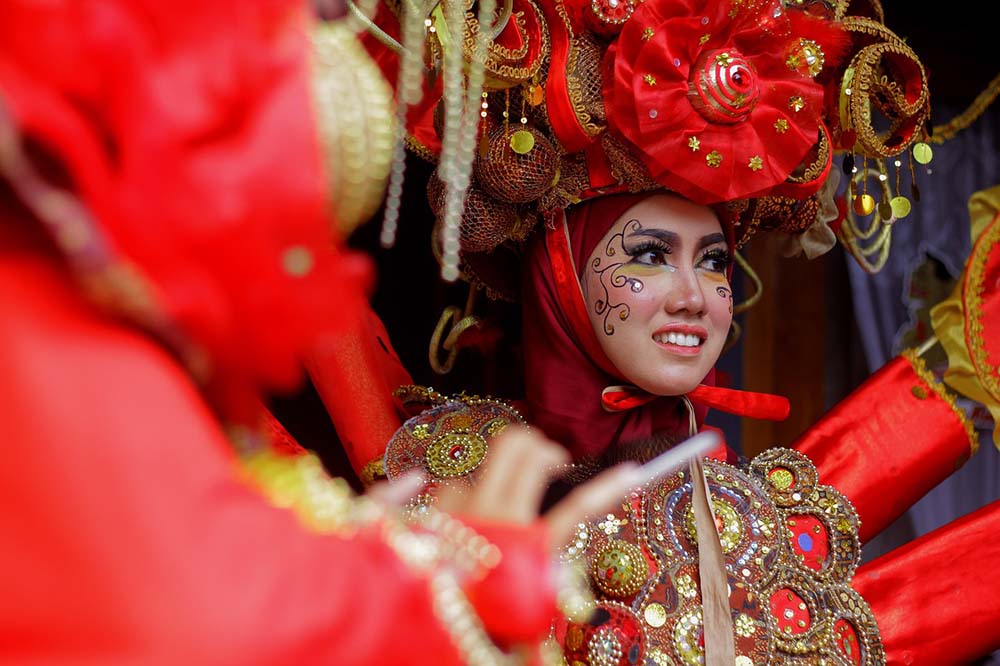The Transformative Power of Art: How It Influences and Shapes Communities and Cultures
Art has always held the power to captivate, inspire, and unite us. It has the unique ability to transcend language barriers and forge connections between people from diverse backgrounds. But art does more than just entertain and intrigue; it has the transformative power to shape communities and cultures. Through various forms like visual arts, performing arts, and literary arts, art has the ability to challenge societal norms, spark conversations, and bring about social change. Whether it’s a thought-provoking painting, a powerful theatrical performance, or a poignant piece of literature, art has the potential to challenge our perceptions, broaden our horizons, and foster empathy and understanding. Communities and cultures are shaped by the art they produce and consume. Art has the ability to preserve traditions, celebrate diversity, and catalyze dialogue on important issues. It can provide a platform for marginalized voices to be heard and empower individuals to express themselves freely.

In this article, we will explore the transformative power of art and delve into how it influences and shapes communities and cultures. We will examine real-life examples of how art has impacted societies and discuss the importance of supporting and nurturing artistic expression. Join us on this journey as we discover the profound impact art has on our world.
The Transformative Power of Art: How It Influences and Shapes Communities and Cultures
Art has always been a powerful catalyst for change within communities, sparking conversations, challenging norms, and inspiring social movements. The ability of art to provoke thought and evoke emotions makes it a potent force in driving societal transformation. By addressing pressing issues, advocating for marginalized voices, and fostering dialogue, art plays a vital role in shaping the collective consciousness of a community.
Artists have long used their creative expressions to shed light on social injustices and advocate for change.

From the powerful protest songs of the civil rights movement to the striking visual artworks addressing environmental concerns, art has been a driving force behind many social movements. Through their work, artists not only reflect the world around them but also envision a better future, inspiring others to take action and make a difference.
Moreover, art serves as a bridge between diverse communities, fostering understanding and empathy. Cultural exchanges through art exhibitions, music festivals, and literary events provide platforms for people from different backgrounds to come together, appreciate each other’s perspectives, and celebrate shared values. These interactions help break down barriers, promote tolerance, and strengthen the fabric of society.
The Role of Art in Shaping Cultures
Art plays a fundamental role in shaping the identity and values of a culture. From ancient cave paintings to contemporary multimedia installations, art reflects the beliefs, traditions, and aspirations of a society.

Through art, cultural heritage is preserved, passed down through generations, and reinterpreted in the context of modern times. This continuous dialogue between the past and the present enriches the cultural tapestry of a community.
Furthermore, art acts as a mirror that reflects the soul of a culture, capturing its essence, struggles, and triumphs. By examining the artworks of a particular period, one can gain insights into the prevailing social, political, and economic conditions of that time. Artists often serve as cultural ambassadors, articulating the values and concerns of their communities through their creations, thus contributing to the collective memory of a culture.
Art also has the power to inspire innovation and creativity within a culture. By pushing boundaries, experimenting with new forms, and challenging conventions, artists propel cultural evolution forward. Whether through groundbreaking technological advancements in the digital arts or avant-garde performances that defy traditional norms, art stimulates imagination, encourages critical thinking, and fosters a spirit of innovation.
Historical Examples of Art’s Transformative Power
Throughout history, art has played a pivotal role in driving social change and shaping the course of civilizations. The Renaissance period, for example, witnessed a flourishing of artistic expression that not only revolutionized the aesthetic sensibilities of Europe but also laid the foundation for the humanist ideals that would shape modern society. The works of Leonardo da Vinci, Michelangelo, and Raphael not only adorned churches and palaces but also challenged prevailing beliefs about art, science, and the human experience.
Similarly, the Harlem Renaissance of the 1920s was a cultural movement that brought about a renaissance of African American arts and literature. Through their writings, music, and visual arts, African American artists celebrated their heritage, challenged racial stereotypes, and demanded recognition and equality. Figures like Langston Hughes, Zora Neale Hurston, and Duke Ellington not only enriched American culture but also paved the way for the civil rights movement of the 1960s.
In more recent times, the street art movement has emerged as a powerful form of artistic expression that transcends traditional boundaries. Street artists like Banksy use public spaces as their canvas to address pressing social issues, provoke thought, and engage with communities directly. Their thought-provoking murals serve as a visual commentary on topics such as politics, consumerism, and the environment, sparking conversations and inspiring change.
Art and Social Justice Movements
Art has been a driving force behind numerous social justice movements, providing a platform for marginalized voices to be heard and advocating for equality and justice. From the civil rights movement to the LGBTQ+ rights movement, art has been instrumental in raising awareness, building solidarity, and galvanizing action. Through art exhibitions, performances, and installations, artists have addressed systemic injustices, challenged discriminatory practices, and called for meaningful change.
One powerful example of art’s impact on social justice is the AIDS Memorial Quilt, a massive handmade quilt created to commemorate the lives lost to the AIDS epidemic.
Each panel of the quilt represents a person who has died from AIDS, serving as a poignant reminder of the human cost of the disease. The quilt has been displayed in public spaces around the world, raising awareness, promoting compassion, and advocating for better healthcare policies.
Art also plays a crucial role in amplifying the voices of marginalized communities and advocating for their rights. Through projects like community murals, storytelling workshops, and theater productions, artists empower individuals to share their stories, express their identities, and demand social change. By centering the experiences of those who have been historically marginalized, art serves as a powerful tool for building empathy, fostering understanding, and promoting inclusivity.
Art as a Tool for Self-Expression and Empowerment
Artistic expression is a deeply personal and transformative process that allows individuals to explore their identities, emotions, and experiences. Whether through painting, poetry, dance, or music, art offers a means of self-discovery, healing, and empowerment.
By creating art, individuals can communicate their innermost thoughts, confront their fears, and celebrate their joys in a safe and supportive environment.
Art therapy, for example, is a form of psychotherapy that uses artistic expression as a means of healing and self-exploration. Through guided art-making activities, individuals can process trauma, reduce stress, and enhance their emotional well-being. Art therapy has been shown to be effective in treating a wide range of mental health issues, including anxiety, depression, and PTSD, providing a creative outlet for individuals to express themselves and gain insight into their emotions.
Moreover, art has the power to empower individuals to effect positive change in their communities. By sharing their stories, advocating for social causes, and engaging with others through artistic collaborations, individuals can become agents of change, inspiring others to take action and make a difference. Through art, individuals can find their voice, connect with others, and contribute to the greater good, creating a ripple effect of positivity and transformation.
Conclusion
In conclusion, the transformative power of art is undeniable, influencing and shaping communities and cultures in profound ways. From sparking social movements to preserving cultural heritage, art serves as a catalyst for change, a mirror of society, and a tool for self-expression and empowerment. By supporting and nurturing artistic expression, we can harness the creative energy of individuals, amplify marginalized voices, and build more inclusive and compassionate communities.
Art has the unique ability to transcend boundaries, foster connections, and inspire empathy, making it a powerful force for positive change in the world. As we continue to explore the transformative power of art, let us celebrate the diversity of artistic expressions, champion the voices of underrepresented communities, and harness the creative potential of individuals to build a more equitable and harmonious society. Join us in embracing the transformative power of art and shaping a brighter future for all.


